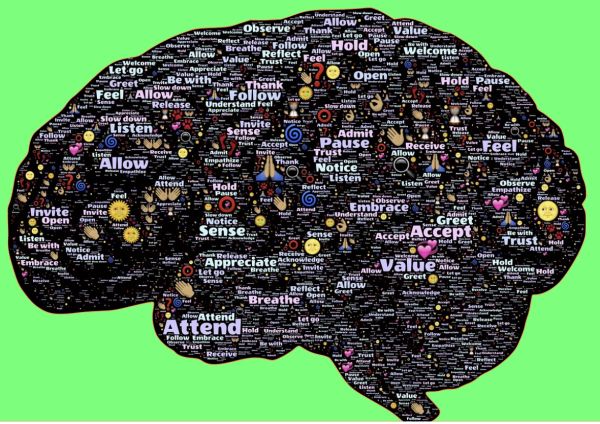
The first VR meditation app on the market has incorporated electroencephalography (EEG) biofeedback, a form of brain wave training. In this method, the user is provided with near real-time information about brainwave activity. The audio adapts to user's mental state. The voiceover then directs the user to the present moment. It is a powerful tool for virtual reality meditation, as it can offer many benefits to the user.
The benefits of VR meditation are numerous, and it can improve the quality of a person's life. You can use it by one person, a couple, or an entire office. There are many ways to use VR meditation for the benefit of a person's health, and the technology is an excellent resource for beginners. Just remember to set aside some time for meditation. You can also experiment with other VR experiences such as video games if you wish to prove your abilities.

One of the best things about VR is the ability of experiencing two different moments at once. It is possible to simultaneously be in the virtual and real worlds. The same mindfulness audio guidance will help you switch your attention between the realities. It can make virtual reality meditation feel more pleasant. The technology could be used for this purpose to lessen negative emotions. This technology could help people focus and engage in a more productive practice.
VR meditation also promotes user engagement. VR-based meditation can reduce anxiety and sadness. This is in contrast to video-based meditation. Crosswell and Yun's study found that VR-based meditation is better than traditional video-based mediation. This is more so than meditating in front of a monitor at home. You might consider starting a virtual reality meditation class.
VR meditation apps may be beneficial in addition to a traditional mindfulness program, but they are not as effective as a video-only one. These apps include audio recordings that are an invaluable source of information and can be used to meditate. Sometimes, these apps can be used as an addition to mindfulness programs. Although VR can have its limitations, it can help people improve their mental health.

While this method of meditation has the potential to benefit many people, it is not yet a universal app. There are many VR meditation applications available. You can choose the one that is right for you. These apps can help you gain a different perspective on meditation, and even help you reach your goals. However, it's important to remember that you'll need time to meditate. Timers are a feature of the best virtual reality meditation applications.
FAQ
What are the 7 tips to have a healthy life?
-
You should eat right
-
Exercise regularly
-
Good sleep
-
Drink plenty of water.
-
Get enough rest
-
Happy!
-
Smile often
How often should you exercise?
Fitness is key to a healthy lifestyle. However, there isn't a set amount of time you must spend working out. Finding something that you love and sticking with it is the key.
If you are working out three times a weeks, aim to do 20-30 minute of moderate intensity. Moderate intensity means that you will still be working hard even after your workout is over. This type workout burns about 300 calories.
You can walk for 10 minutes every day if that is what you prefer. Walking is low in impact and easy for your joints.
Jogging three times a week for 15 mins is enough if you want to run. Running can help you burn calories and to tone your muscles.
You can start slow if you're new to exercise. Begin by only doing 5 minutes of cardio five times per week. Gradually increase the amount of cardio you do until you reach your goal.
How do you measure body fat?
A Body Fat Analyzer is the best way to measure body weight. These devices are used to determine the percentage of bodyfat in people who desire to lose weight.
What is the difference of fat and sugar?
Fat is an energy source that comes from food. Sugar is a sweet substance found naturally in fruits and vegetables. Both fats and sugars provide the same number of calories. However, fats contain more than twice as many calories as sugars.
Fats can be stored in the body, which can lead to obesity. They can cause cholesterol buildup, which can lead you to heart attacks and strokes.
Sugars are quickly absorbed by the body and provide instant energy. This causes blood glucose levels in the body to rise. High blood sugar levels can cause type II diabetes.
Exercise: Good for immunity or not?
Exercise is good for your immune systems. Your body creates white blood cells when you exercise that fight infection. You can also eliminate toxins from the body. Exercise helps prevent diseases like cancer and heart disease. Exercise also helps to reduce stress levels.
Exercising too often can cause your immune system to be weaker. When you exercise too hard, your muscles will become sore. This can cause inflammation and swelling. Your body will then produce more antibodies in order to fight infections. However, these antibodies can also cause allergic reactions and autoimmune diseases.
So, don't overdo it!
What is the difference in calorie and kilocalories?
Calories can be used to measure how much energy is in food. Calories are a unit of measurement. One calorie is the amount of energy required to heat one gram water one degree Celsius.
Kilocalories are another term for calories. Kilocalories can be measured in thousandsths of one calorie. 1000 calories are equal to one kilocalorie.
Statistics
- Extra virgin olive oil may benefit heart health, as people who consume it have a lower risk for dying from heart attacks and strokes according to some evidence (57Trusted Source (healthline.com)
- nutrients.[17]X Research sourceWhole grains to try include: 100% whole wheat pasta and bread, brown rice, whole grain oats, farro, millet, quinoa, and barley. (wikihow.com)
- WHO recommends reducing saturated fats to less than 10% of total energy intake; reducing trans-fats to less than 1% of total energy intake; and replacing both saturated fats and trans-fats to unsaturated fats. (who.int)
- The Dietary Guidelines for Americans recommend keeping added sugar intake below 10% of your daily calorie intake, while the World Health Organization recommends slashing added sugars to 5% or less of your daily calories for optimal health (59Trusted (healthline.com)
External Links
How To
What does "vitamin" actually mean?
Vitamins can be described as organic compounds found in food. Vitamins allow us to absorb nutrients from food. Vitamins cannot be produced by the body. They must be acquired from food.
There are two types: water-soluble and fat-soluble vitamins. Water-soluble vitamins dissolve readily in water. Examples include vitamin C,B1 (thiamine), B2 (riboflavin), B3 (niacin), B6 (pyridoxine), folic acid, biotin, pantothenic acid, and choline. Fat soluble vitamins are stored in the liver and fatty tissue. These include vitamin D, E and K, as well as beta carotene.
Vitamins are classified according their biological activity. There are eight major categories of vitamins.
-
A - Essential for healthy growth and health maintenance.
-
C - important for proper nerve function and energy production.
-
D - necessary for healthy bones and teeth.
-
E is necessary for good vision, reproduction.
-
K - required for healthy muscles and nerves.
-
P - essential for strong bones, teeth and tendons
-
Q – aids digestion of iron and iron absorption
-
R - necessary for making red blood cells.
The recommended daily allowance of vitamins (RDA), varies according to age, gender, physical condition, and other factors. The U.S. Food and Drug Administration, (FDA), sets the RDA value.
For adults aged 19 and older, the RDA for vitamin B is 400 micrograms daily. Because it is essential for the development of the fetus, pregnant women should consume 600 micrograms per daily. Children ages 1-8 require 900 micrograms per day. Babies under one-year old require 700 mg per day. Between 9 and 12 years of age, however, this drops to 500 mg per day.
Children between the ages 1--18 years old who are overweight or obese require 800 micrograms per Day, while those who are overweight or obese need 1000 micrograms. To meet their nutritional needs, children underweight and obese require 1200 micrograms a day.
Children 4-8 years old who have anemia must consume 2200 micrograms of Vitamin C daily.
2000 micrograms are required daily for good health in adults over 50. Because of their higher nutrient needs, women who are pregnant or nursing need 3000 mg per day.
Adults over 70 require 1500 micrograms each day, since they lose around 10% of their muscle mass every decade.
Women who have been pregnant or are lactating require more than the RDA. Pregnant women require 4000 micrograms daily during pregnancy, and 2500 micrograms every day after birth. Breastfeeding mothers need to consume 5000 micrograms every day when breastmilk has been produced.